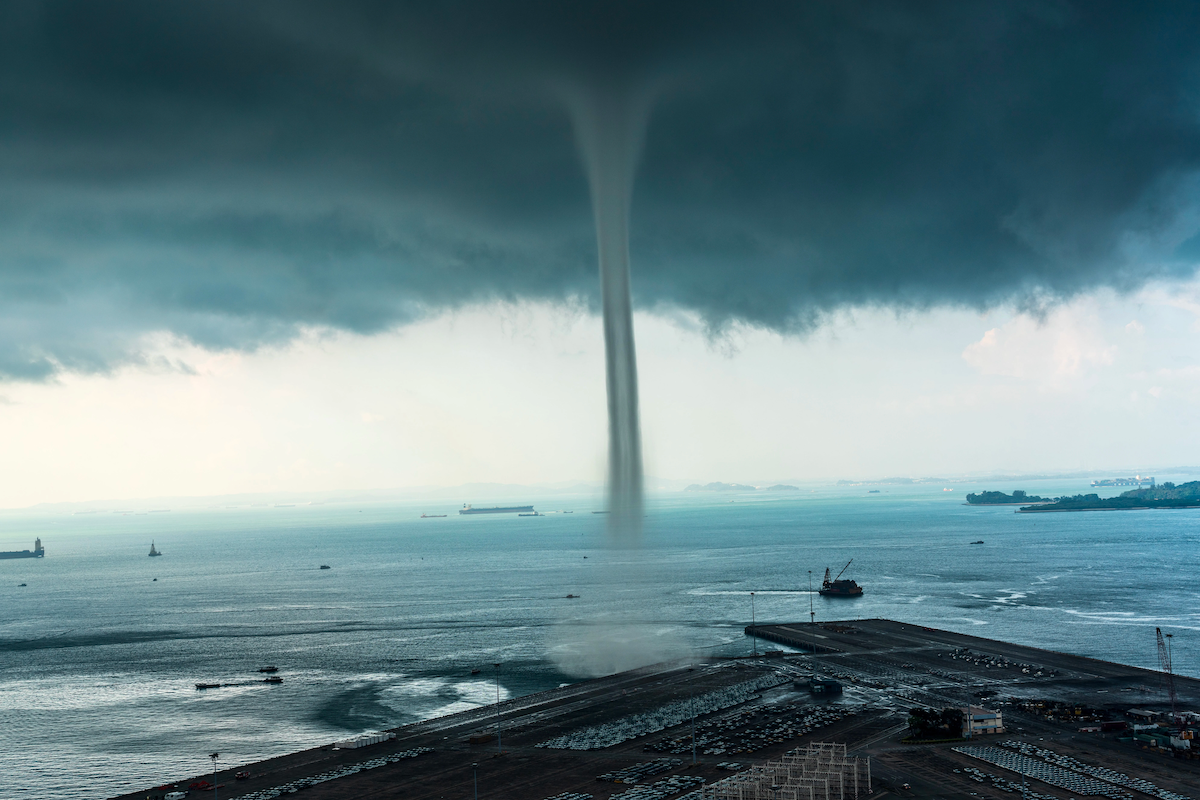Florida and Louisiana have their share of natural disasters like hurricanes, and floods. Being so close to the ocean with such dynamic weather changes can also lead to another catastrophic event: a waterspout. A waterspout's potential for damage depends on the type of waterspout it is.
Waterspouts are tornado-like whirlwinds of water mist and air that usually start over the ocean and can move over land.
Waterspouts defined
According to the National Oceanic Atmospheric Administration (NOAA), a waterspout is a “whirling column of air and water mist.” They essentially look like a tornado over water, but certain waterspouts can move over land for some time. Waterspouts that move onto land can be dangerous and cause damage to both property and people.
Waterspouts that hit land can be perilous because of their speed and size. While the average waterspout is 165 feet in diameter and lasts anywhere between two and 20 minutes, massive ones can exceed 330 feet in diameter and may last up to an hour. Wind speeds may exceed 50 miles per hour.
3 Types of Waterspouts
There are three types of waterspouts: fair weather, tornadic, and snowspout.
- Fair-weather waterspouts are created from developing cumulus clouds and don’t move very much.
- Tornadic waterspouts are associated with extreme weather, such as hurricanes and thunderstorms. They can move quite a bit and have the same characteristics as land tornadoes. If a tornadic waterspout hits land, the National Weather Service sounds a tornado warning for the local communities.
- Snowspouts occur when a waterspout forms under the base of a snow squall. Sometimes called snow devils, snowspouts are rare and tend to be weak, though some have reached an EF1 warning level.
How do waterspouts form?
How a waterspout forms depends on the type of waterspout it is.
A fair-weather waterspout occurs over open water when cool air sweeps across the surface and pulls the water up.
Tornadic waterspouts are different in that they happen during thunderstorm conditions – some even start as tornadoes on land and move over water. Additionally, tornadic waterspouts are more likely to develop in the sky and reach down.
The five stages of a waterspout are:
- Dark spot: A light-colored disk becomes prominent on the water’s surface. This lighter disc is surrounded by a dark area with diffused edges.
- Spiral pattern: Light- and dark-colored bands spiral out from the dark spot.
- Spray ring: The dark spot develops a dense swirl of sea spray, called a cascade, that looks similar to the eye of a hurricane.
- Mature vortex: The spray ring expands into a spinning funnel that stretches from the water to the clouds above.
- Decay: Warm air weakens the vortex, and it begins to dissipate.
The key component of any waterspout is the focused cold air cycling over the warm surface water. Once the conditions are met, a waterspout could develop.
How to stay safe from a waterspout
As we mentioned, the NWS issues a tornado warning when a waterspout moves on land. But you can also protect yourself and your family by paying attention to weather conditions so you can avoid waterspouts altogether. For example, if you’re out on the water you want to:
- Pay attention to special marine warnings.
- Look for waterspouts underneath cumulus clouds with dark, flat bases.
- Move at a 90-degree angle away from a waterspout’s direction if you see one.
Remember, too, that you never want to try and move through a waterspout.
Are waterspouts covered by homeowners insurance?
With speeds exceeding 50 miles per hour, homeowners could see damage from a waterspout, particularly if it picks up debris and sends it into their home. Luckily, most homeowners insurance (including homeowners insurance in Florida) covers waterspouts as windstorm damage. However, if a waterspout happens because of hurricane conditions, homeowners should note that policies only cover damage caused by wind. Storm surge from a hurricane is usually covered by flood insurance.
Want to make sure your insurance can handle whatever comes your way? We’ll be happy to review your policy to see if you’ve got all your bases covered.


